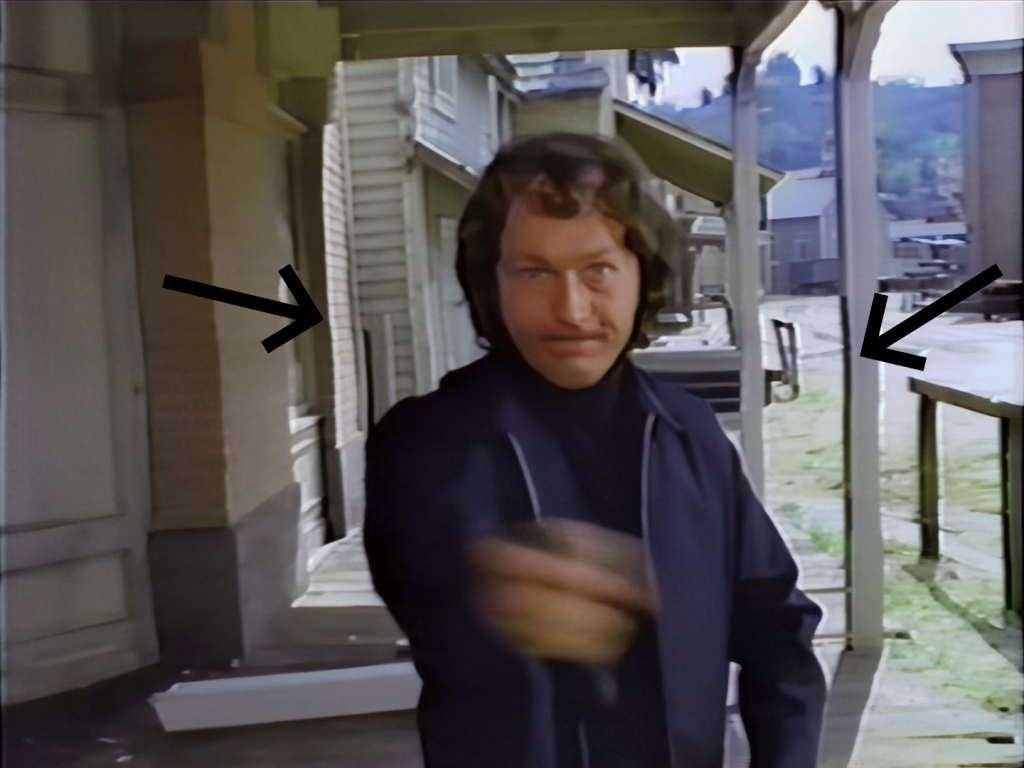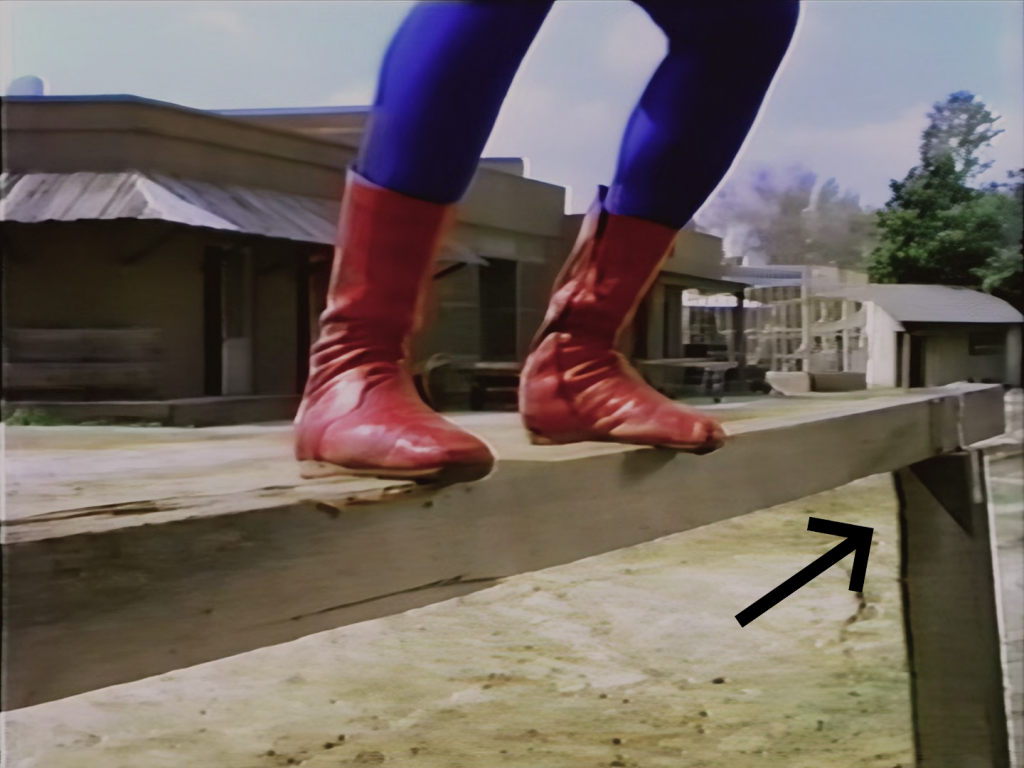After some success recreating the opening teaser using a combination of sources, we decided to try something a little more difficult. The clips used in the trailer were very short, “quick edit” type clips lasting only a couple of seconds each. With such a dizzying pace it was relatively easy to conceal differences in sources because the viewer wouldn’t spend enough time looking at them to study them, but what about longer scenes where the viewer would be able to get a good, long look at the source? Would it be possible to make those look seamless?
We chose the scene in “Deadly Dust” Part 2 of Emil Farkas using a nunchaku to find out. This scene was removed from all international versions of the film due to the wide variety of regulations surrounding the nunchaku in different countries. Teenage Mutant Ninja Turtles got the same treatment for broadcast in the UK due to restrictions in place there. The scene only exists in domestic VHS releases of the “Deadly Dust” version, which are all made from lower quality prints than the Spider-Man Strikes Back version that was released internationally. It make sense because it’s not unreasonable to speculate that a film print intended to be projected on an 80-foot screen might get a little more care than a VHS release intended to be viewed on a 27″ or so television screen. Interestingly, the cinematic version is zoomed in quite a bit compared to the TV version.
The first thing to do was get the secondary source digitized. The Playhouse Video version was deemed the best of our copies in the absence of a Rhino version. As per our usual procedure, the tape was played on a Panasonic 4-head video deck and captured with a Canopus ADVC-300 using a time base corrector and hardware Y/C separation over firewire. The capture was saved as standard NTSC DV. We took the audio from that capture, cleaned it up in Audition to remove tape hiss and equalize it, and synced it to the AI enhanced video from Spider-Man Strikes Back, minus the two missing clips.
The fill-in capture was then put through an initial cleanup AVISynth script. The script performed an inverse telecine to restore it to its original 23.976 fps, and then we hit it with some modest noise reduction to remove the most obvious dirt and grain without destroying any visible detail. Once that was done, it was put through the Topaz AI for enhancement and upscaling to 1080p. Finally, it was color matched to our primary source as closely as possible in Premiere Pro and dropped in place. The results were respectable, but not what we were hoping for. The vertical distortion that’s common in old videotape is quite noticeable here and accentuates the minor color differences to prevent the transition from being seamless.
Until we can establish a better way of matching sources, this will be a barrier to release – at least for this story. All of the sources will need to be better before this will be at a quality we can accept. But hey, that’s what tests are for. The more we experiment, the better we will get at this.


